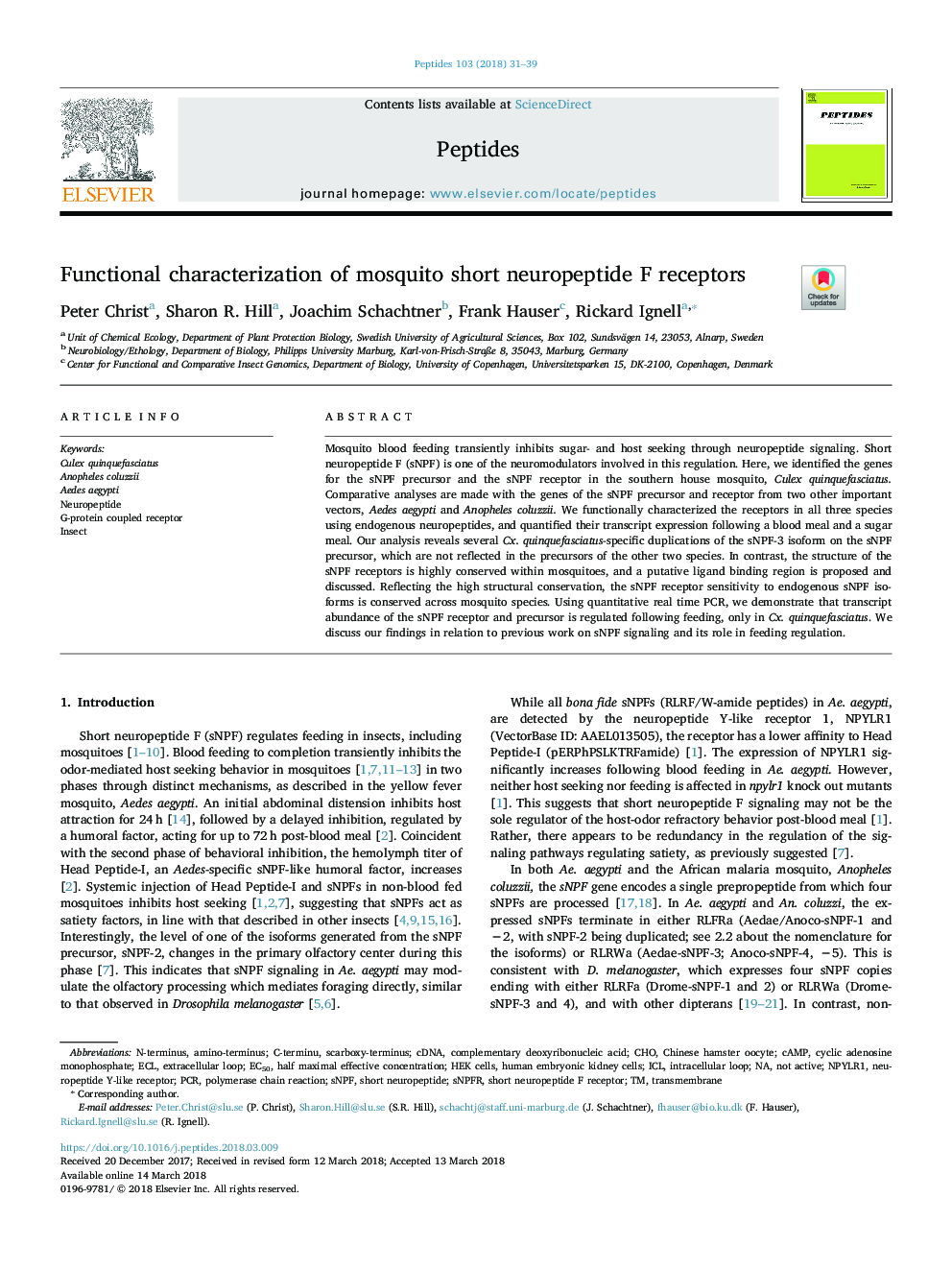| Article ID | Journal | Published Year | Pages | File Type |
|---|---|---|---|---|
| 8347330 | Peptides | 2018 | 9 Pages |
Abstract
Mosquito blood feeding transiently inhibits sugar- and host seeking through neuropeptide signaling. Short neuropeptide F (sNPF) is one of the neuromodulators involved in this regulation. Here, we identified the genes for the sNPF precursor and the sNPF receptor in the southern house mosquito, Culex quinquefasciatus. Comparative analyses are made with the genes of the sNPF precursor and receptor from two other important vectors, Aedes aegypti and Anopheles coluzzii. We functionally characterized the receptors in all three species using endogenous neuropeptides, and quantified their transcript expression following a blood meal and a sugar meal. Our analysis reveals several Cx. quinquefasciatus-specific duplications of the sNPF-3 isoform on the sNPF precursor, which are not reflected in the precursors of the other two species. In contrast, the structure of the sNPF receptors is highly conserved within mosquitoes, and a putative ligand binding region is proposed and discussed. Reflecting the high structural conservation, the sNPF receptor sensitivity to endogenous sNPF isoforms is conserved across mosquito species. Using quantitative real time PCR, we demonstrate that transcript abundance of the sNPF receptor and precursor is regulated following feeding, only in Cx. quinquefasciatus. We discuss our findings in relation to previous work on sNPF signaling and its role in feeding regulation.
Related Topics
Life Sciences
Biochemistry, Genetics and Molecular Biology
Biochemistry
Authors
Peter Christ, Sharon R. Hill, Joachim Schachtner, Frank Hauser, Rickard Ignell,
